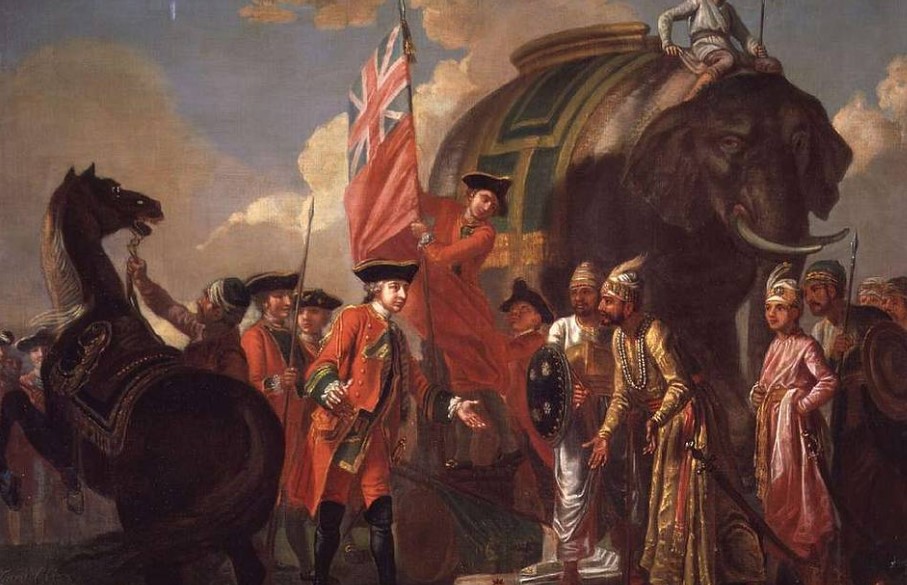
Modern History MCQs – 1 (Arrival of Europeans in India)
Most important multiple choice questions from the chapter – Arrival of Europeans in India MCQs.
Home » UPSC Study Materials » Prelims Express » Chapterwise MCQs » Modern History MCQs » Modern History MCQs – 13 (Simon Commission and Nehru Report)
Simon Commission and Nehru Report MCQs with answers and explanations for UPSC and Other examinations.
1. When did the Simon Commission visit India ?
(a) 1927
(b) 1928
(c) 1929
(d) 1931
Correct Answer – (b) 1928
2. Consider the following statements about Simon Commission :
1. The Congress boycotted the Simon Commission.
2. The Simon Commission did not have a single Indian member.
Which of the above statements is/are correct ?
(a) 1 only
(b) 2 only
(c) Both 1 & 2
(d) None of the above
Correct Answer – (c) Both 1 & 2
3. Lala Lajpat Rai was injured while protesting which among the following ?
(a) Simon Commission
(b) Rowlatt Act
(c) Cabinet Mission
(d) Government of India Act 1919
Correct Answer – (a) Simon Commission
4. Consider the following statements about ‘Nehru Report’ :
1. It was prepared by Jawaharlal Nehru.
2. It demanded dominion Status for India.
Which of the above statements is/are correct ?
(a) 1 only
(b) 2 only
(c) Both 1 & 2
(d) None of the above
Correct Answer – (b) 2 only
5. Consider the following statements about ‘Nehru Report’ :
1. It rejected the idea of a separate electorate for minorities.
2. Muslim League rejected the proposals of the report.
Which of the above statements is/are correct ?
(a) 1 only
(b) 2 only
(c) Both 1 & 2
(d) None of the above
Correct Answer – (c) Both 1 & 2
6. M.A. Jinnah put forth his Fourteen Points in reaction to which among the following ?
(a) Simon Commission
(b) Rowlatt Act
(c) Nehru Report
(d) Government of India Act 1919
Correct Answer – (c) Nehru Report
7. Who amongst the following was responsible for the formation of the ‘Independence of India League’ in 1928 ?
1. Jawahar Lal Nehru
2. Subhash Chandra Bose
3. Mohammad Ali Jinnah
Choose your answer from the given code:
(a) 1 Only
(c) 1 and 2 Only
(b) 2 and 3 Only
(d) All of the Above
Correct Answer – (c) 1 and 2 Only
8. Who among the following presided over the famous Lahore session of INC in 1929 ?
(a) Jawaharlal Nehru
(b) Abul Kalam Azad
(c) Ananda Mohan Bose
(d) Mahatma Gandhi
Correct Answer – (a) Jawaharlal Nehru
9. Who among the following declared the Communal Award ?
(a) Ramsay MacDonald
(b) Queen Victoria
(c) Lord Canning
(d) Lord Minto
Correct Answer – (a) Ramsay MacDonald
10. The Poona Pact (1932) was an agreement signed between who among the following ?
(a) Nehru and Ambedkar
(b) Gandhi and Ambedkar
(c) Malaviya and Ambedkar
(d) Gandhi and Nehru
Correct Answer – (b) Gandhi and Ambedkar
More questions are coming soon. Join us on Whatsapp for latest updates: Join CivilsCracker on Whatsapp

Most important multiple choice questions from the chapter – Arrival of Europeans in India MCQs.

Most important multiple choice questions from the chapter – Battle of Plassey and Battle of Buxar MCQs.

Most important multiple choice questions from the chapter – Social and Religious Reform Movements MCQs.

Most important multiple choice questions from the chapter – Anglo Mysore Wars and Anglo Maratha Wars MCQs.

Most important multiple choice questions from the chapter – Governor Generals of India MCQs.

Most important multiple choice questions from the chapter – Revolt of 1857 MCQs.

Most important multiple choice questions from the chapter – Organizations before Indian National Congress MCQs.

Most important multiple choice questions from the chapter – Important Sessions of Indian National Congress MCQs.

Most important multiple choice questions from the chapter – Partition of Bengal and Swadeshi Movement MCQs.

Most important multiple choice questions from the chapter – Surat Split and Lucknow Pact MCQs.

Most important multiple choice questions from the chapter – Arrival of Gandhi and Jallianwala Bagh Massacre MCQs.

Most important multiple choice questions from the chapter – Khilafat and Non Cooperation Movement MCQs.

Most important multiple choice questions from the chapter – Civil Disobedience Movement MCQs.

Most important multiple choice questions from the chapter – Communal Award and Poona Pact MCQs.

Most important multiple choice questions from the chapter – Individual Satyagraha and Cripps Mission MCQs.

Most important multiple choice questions from the chapter – Quit India Movement MCQs.

Most important multiple choice questions from the chapter – Indian National Army and Royal Indian Navy Mutiny MCQs.

Most important multiple choice questions from the chapter – Cabinet Mission and Formation of Constituent Assembly MCQs.

Most important multiple choice questions from the chapter – Independence and Partition of India MCQs.
We are adding new Notes, Chapterwise MCQs, Quizzes, Previous Years Questions everyday
We are adding new Notes, Chapterwise MCQs, Quizzes, Previous Years Questions everyday